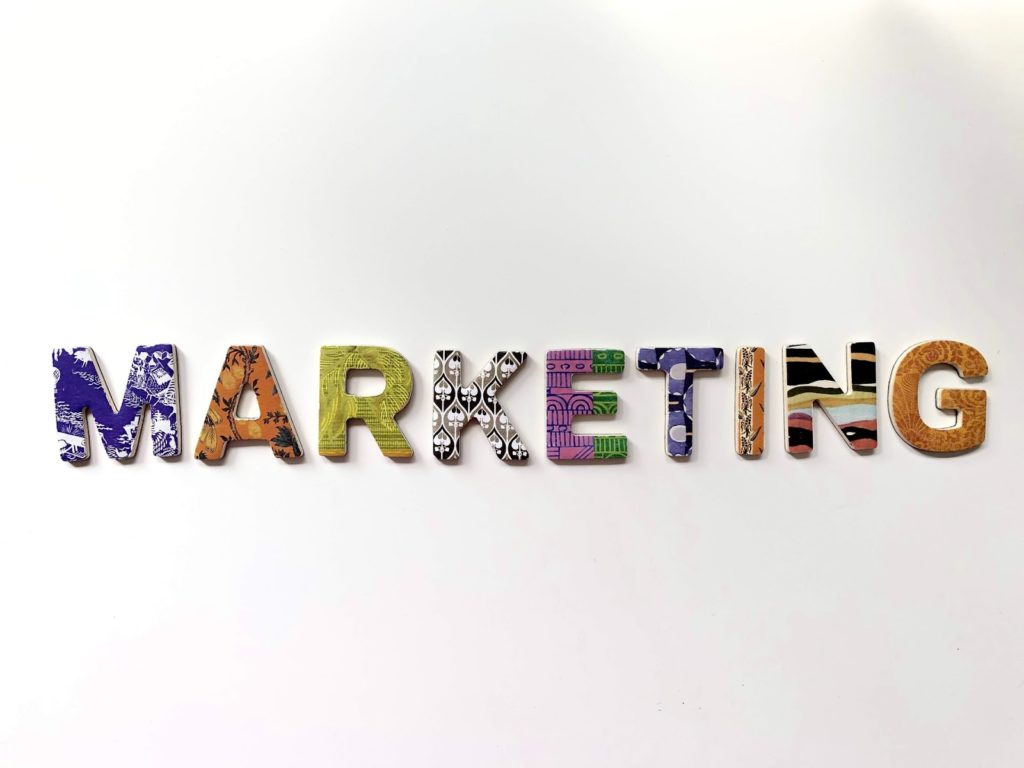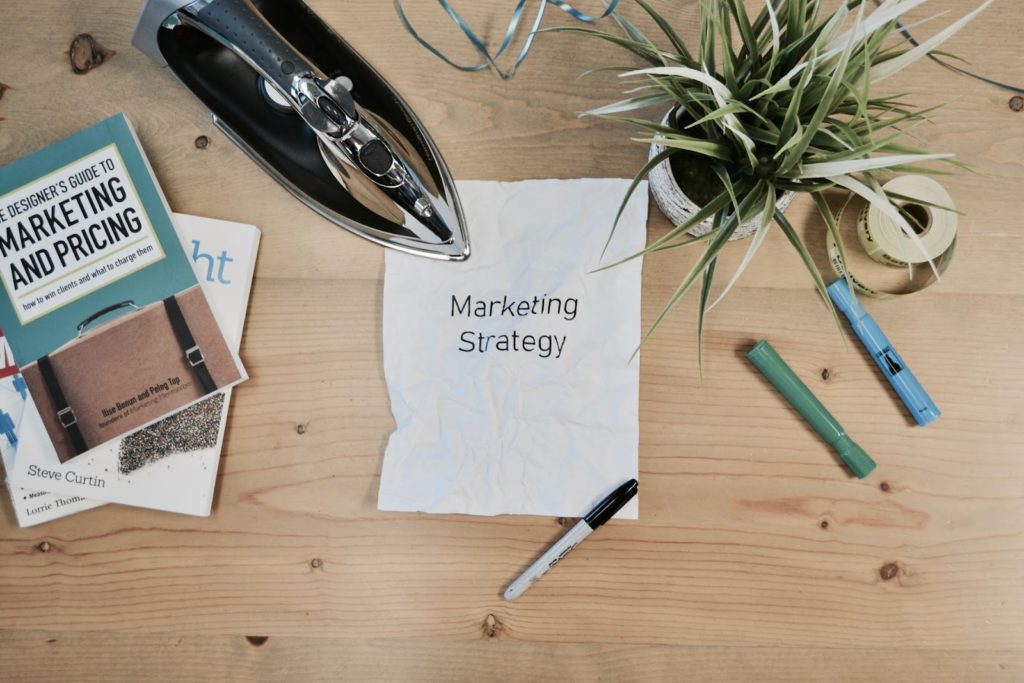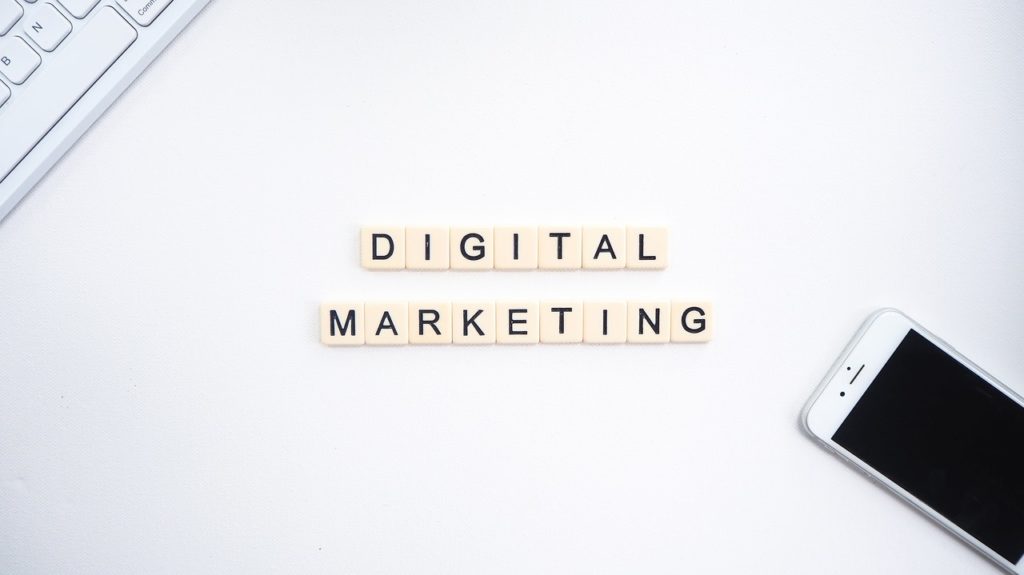Are you looking for ideas on what type of marketing collateral you should be creating for your business? Or maybe you’d like to review your existing marketing material to help you meet your company’s targets?
In this article, we explain what marketing collateral is and give you a straightforward process that will help you create deliverables that meet your strategy and help you achieve tangible results. We also walk you through some of the most popular types of digital marketing content and explain how they can benefit your business.
Ready? Let’s go.

What is marketing collateral?
Marketing collateral is any type of material that helps you share information about what you sell (i.e. your products and services) with your ideal customers or clients. In the ‘offline world’, typical examples of marketing collateral include leaflets, flyers, business cards, promotional merchandise, billboards, etc.
But since a lot of companies have embraced online or digital marketing, the number of items that now fall under the ‘marketing collateral’ umbrella has pretty much exploded. From social media bios to blog posts, newsletters, video series, etc., the list is endless.
And yet, not all pieces of marketing material were created equal. Different types of marketing content can help you reach various types or people (or customer segments) and meet distinct goals.
So how do you know what you should create when, and how? You won’t know the exact answers to these questions unless you ask yourself why you need marketing material in the first place.
Why do you need marketing collateral?
Marketing isn’t just about letting your ideal customers and clients know what you sell. It’s also about communicating why you do what you do and why they should pay attention.
What you produce as part of your marketing efforts gives you an opportunity to grab the attention of the people you want to work with - your prospective customers and clients. Unless you sell something exclusive and unique, they probably already know about the existence of your products or services. But what they don’t know is that you sell them and why they should come to you to buy them.
So use your marketing content not just to share what you sell, but also to let your audience know why you’re the right business to work with or buy from. Make them stop and listen to, watch, or read what you have to say, so the next thing they do is to get in touch with you and take the next step to become your customer or client.
Your marketing material can help with...
So, in a nutshell, here’s what you can do through your marketing content:
- Clarify what you do. This is the what, i.e. the features of your products or services.
- Explain the benefits of using your product or service. Why do your ideal customers or clients need what you sell? What results do you help them achieve? What problems or challenges will they be able to solve?
- Explain why they should buy from you. How is your product, service, business, or brand unique? What’s your USP? What makes you different from your competitors? Why should your ideal customers or clients choose you?
You’ll probably find that not one piece of marketing material will help you tick all these boxes. So before you create anything, ask yourself what you want to achieve. Do you want your marketing collateral to showcase what you sell? Sell the benefits of your products and services? Or tell the world why you’re the best in the market?
Once you’re 100% clear on why you need this content in the first place (i.e. you have a series of clear objectives in mind), you can then start to think about what products you will create and refine your marketing strategy.

Marketing collateral creation process
With so much choice available, it can be hard to know what would work best for your business right now. And that’s exactly why, before you make any further decisions and go ahead with spending money from your marketing budget, you (or the decision-makers and stakeholders in your company), need to ask yourself a few questions. Your budget may also steer some of the choices you make. The cost of printing and distributing thousands of physical leaflets, for example, is different than creating copy for a weekly newsletter.
So here are some of the helpful questions you need to ask yourself (or your stakeholders) before you create any marketing collateral for your company.
Who
Who is your audience, and who is your marketing material aimed at? Once you’re clear on the reasons why you need the content, you have to decide what audience you want to put your message in front of. You might sell products or services aimed at different customer segments - in that case, you need to decide who you are addressing first, as the content or the medium may need to vary.
What
You’ve already determined why you want to create marketing content, so now try and qualify and quantify this. Do you want to get in front of a specific amount of new customers or clients? Do you want to increase your sales by a certain percentage? Or maybe you want new subscribers to join your newsletter? Look at your why and dig deeper here - drill down and be as specific as you can. Wherever you can, attach measurable targets to your goals.
When
When will you share this content and how often? For example, if you’re coming up with a plan to create a newsletter, how often will you send it out? Weekly, fortnightly, monthly, etc.? Do you have a launch coming up and are thinking of devising a social media campaign to help you boost your sales? How many pieces of collateral will you need and how often will you post them?
Where
Where will you distribute this content? What channels will you share it on? Will it be ‘offline’ or online? And if online, through which platforms? The distribution channels you choose will determine the format, so it’s important to make this call upfront. A physical leafleting campaign requires different deliverables from a social media one, for example.
How
What format or medium will your marketing material be in? Will it be written? Or will it be a piece of audio or video content? Will it be a physical, printed out leaflet, or do you need a social media image to share on Instagram? Will it include any graphics or branded elements that need designing? Before you get to work, it’s important you make these decisions.

Types of marketing collateral
So now that you’re clear on what process you should follow before you decide what types of marketing material to produce, let’s have a look at the types available.
In the past, when businesses thought about marketing, leaflets and brochures would have been the go-to choice. That’s now known as ‘offline’ marketing, as opposed to the myriad of options that open up when you look at online or digital marketing.
You also have different mediums available - written, audio, video, graphic design, etc. and within that, different formats. So a piece of written content can take a multitude of different shapes. Depending on the distribution channel, you can have shorter or longer written content - from tweets all the way to case studies and white papers.
The different types of marketing material all have their own pro’s and con’s, as well as features and ‘rules’ to follow, so let’s look at some of the most popular examples of digital marketing content you can choose from.
Digital marketing collateral examples
This is by no means a comprehensive list, but it should give you a good overview of what you can create if you embrace digital marketing.
Blog posts, articles, and white papers
Blog posts, articles, or white papers are types of written, long-form content (500-800+ words, depending on the type) that can be published on your website. Long-form written content gives you a great chance to share valuable information and ideas with your audience.
Create this content strategically, and it can help you to:
- Create trust. Show your ideal customers and clients that you’re an expert and an authority in your field. Let them see you as the right business to help them with a specific problem they’re looking to solve.
- Establish yourself as the right choice. Do you operate in a specific niche? Then use your content to help your prospective customers or clients understand whether you’re the right business for them.
- Save yourself time. When you share content that relates specifically to your business and the way you work, you get to answer questions on a one-to-many basis. Instead of answering the same queries on the phone or email over and over, write the content down once and share it. You’ll be able to convert clients more efficiently and close sales more easily.
Another advantage is that these pieces of content can also be published on other platforms - both online (other industry websites or online publications and social media) and ‘offline’ (magazines and newspapers that accept expert contributions). Long-form content can also be repurposed into shorter social media updates, and this helps you reach a wider audience.
Top tip: Don’t forget to add a clear Call to Action (CTA) to your blog posts or articles. What do you want your audience to do after reading your piece?
Case studies, testimonials, and reviews
Case studies, testimonials, and reviews are another type of popular long-form (case studies) or short-form (testimonials and reviews) content that you can publish on your website. They don’t necessarily need to be written, but can be in other mediums too (audio and video, for example).
Here’s what these deliverables help you achieve:
- Show your prospects how you work. By going through case studies, testimonials, or reviews that previous customers or clients have left, your prospects can get an idea of how you work. For example, they can find out how your processes work, how many meetings they’ll need to have with you, etc.
- Focus on results. Use your content to show your audience that you’ve helped (and continue to help) people just like them to solve specific problems. This is a surefire way to build trust and credibility. Let them see how you helped others, and they’ll be more likely to believe you can help them too.
Top tip: When creating case studies, tell the story of how you work with your customers or clients step-by-step from start to finish. What did you help people achieve that they couldn’t do before? And what does it mean to them?

eBooks, guides, and PDFs
These written or visual pieces of marketing material are often ‘gated products’. So while you, as a business, won’t be charging for them, you’re not giving them away completely for free either. You may not be requesting money, but you’re asking your prospective customer or clients to give you their email address in exchange for your content.
Why is this good for you?
- Establish yourself as an expert in your field. When you give your audience the solution to a specific problem they’ve been trying to solve they will see you (and not your competitors) as the go-to person in your area of work.
- Build a database of ‘warm leads’. Sending out useful content in exchange for someone’s email address works for you because, over time, it allows you to build a database of subscribers who may be interested in what you sell.
Please remember that capturing someone’s email address in exchange for a piece of collateral doesn’t necessarily mean you’ll be able to email them your offers week in and week out. Before you can do that, under GDPR regulations (which apply if you operate within the EU or if the recipient of your content is in the EU), you’ll need to request and obtain separate consent. So make sure you check what you need to do - don’t get caught out by this!
Top tip: Use eBook, guides, or PDFs to showcase your knowledge and expertise, but ensure your deliverables solve a specific problem. If the title is too vague and the content isn’t clear, your audience won’t part with their email address and download your work.
Newsletter
A newsletter is an email you send out to the prospective customers or clients (or subscribers) that sit on your email list or database and who have given you their consent (if applicable) for you to send marketing content to their inbox. Newsletters generally include written content but can also contain links to other marketing material.
As with any other piece of collateral, it’s important to have a clear objective when sending regular emails out - what do you want to achieve? This will also help you decide on the frequency and the type of content you are going to include.
Why are newsletters a good choice?
- Create a direct relationship with your audience. Newsletters allow for a more personal type of communication with your audience. When your subscribers reply to your emails, they reply directly to you. And the statistical data you receive from your email service provider is more in-depth than anything you can find out about website or social media visitors. So use newsletters to build rapport with your audience.
Top tips: Don’t waste the opportunity by talking about your latest office move or awards! Instead, include information that’s of value to your audience and that you don’t share elsewhere. Have clear CTAs and stick to the frequency you’ve set.

Audio and video content
Creating audio (podcast) and video content can be a great way to boost your conversion and sales and to build trust with your audience. When it comes to creating video, you have different options - from pre-recorded to live - as well as various distribution channels to choose from. You can go live on Facebook, IGTV, or LinkedIn, for example, or share your pre-recorded content via YouTube or Vimeo.
Popular forms of video content can include:
- Explainer content, ie. short, fun and engaging videos that explain how your products or services work.
- Behind-the-scene content. Think of a ‘day in the life’ or ‘how is this made’ type of content that engages people’s natural curiosity.
Why is creating audio or video content a good idea? It helps with:
- Building a closer connection with your audience. When people get to see you or hear your voice while they go about their daily lives (in case of listening to a podcast ‘on the go’, for example), they feel like they know you. When the time to buy comes, you’ll be front of mind.
- Encouraging customer engagement. Multimedia content, and video in particular, can attract more comments and shares than long-form written content. And because of that, you can reach a wider audience.
- Being found on Google. Creating video content gives you better chances of standing out from the crowd. Video is currently being ranked higher in internet searches, so if you create the right type of content, you may find yourself right at the top of search results.
Top tip: When creating video content, focus on the story you want to tell, rather than trying to make sales. Video content is engaging by nature, so don’t forget to make it fun and worth your audience’s time.
Sharing marketing collateral with Content Snare
We hope this article gives you a clearer idea of what process you should follow to create marketing collateral that helps you achieve the objectives you set for your business. And if you need to exchange internal content and documentation relating to your marketing strategy or collateral to share feedback, edits, or sign-offs with your teams, you can do so easily and safely with Content Snare.
Our software allows you to share content with other team members or external stakeholders without having to rely on the confusing back-and-forth of emails. We all know how painful it can be when emails get lost or when we end up working on a piece of content that isn’t up-to-date! With Content Snare, you can invite internal and external collaborators to view and edit and collect and share files from internal and external clients on time and without relying on email. Find out more about Content Snare or sign up for our 14-day FREE trial.

